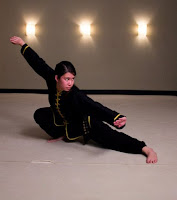Are you looking to improve your leadership skills and gain a competitive edge in business and life? Look no further than the principles and practices of martial arts. They offer a unique set of tools and strategies that can help you become a more valuable leader.
One of the key benefits of martial arts is the emphasis on physical training and discipline. Through rigorous training and practice, martial arts can help you develop the focus, concentration, and mental fortitude needed to excel in leadership roles. By learning to prioritize tasks and stay focused under pressure, you can make better decisions and lead your team with greater confidence.
Martial arts also teach emotional discipline, which is essential for leadership. By learning to control your reactions to difficult situations, you can remain calm and composed in the face of challenges, and make rational decisions that benefit your organization. This emotional resilience can also help you navigate the difficulties of business and inspire confidence in your team.
In addition to physical and emotional discipline, martial arts promote respect for oneself and others. By showing respect, you can create an atmosphere of trust and cooperation in your organization, which is essential for effective leadership. As a leader, you must be able to inspire and motivate your team to do their best work, and respect is a crucial ingredient in building that relationship.
Developing leadership skills takes time and experience, but incorporating martial arts strategies can set you on the right path to success. By practicing physical and emotional discipline, fostering trust, showing respect, and building self-confidence, you can earn the respect and admiration of your colleagues and build a successful leadership career.
To start integrating martial arts principles into your leadership style, consider attending martial arts classes, joining a martial arts community, or studying martial arts philosophy. By taking action and actively seeking to improve your leadership skills, you can set yourself up for success in both your personal and professional life.
In conclusion, martial arts offer a unique set of tools and
strategies that can help you become a more effective and successful leader. By
developing physical and emotional discipline, fostering respect, and building
self-confidence, you can earn the trust and admiration of your colleagues and
build a successful leadership career. So why not take the first step today and explore
the world of martial arts? It just might be the key to unlocking your full
leadership potential.










